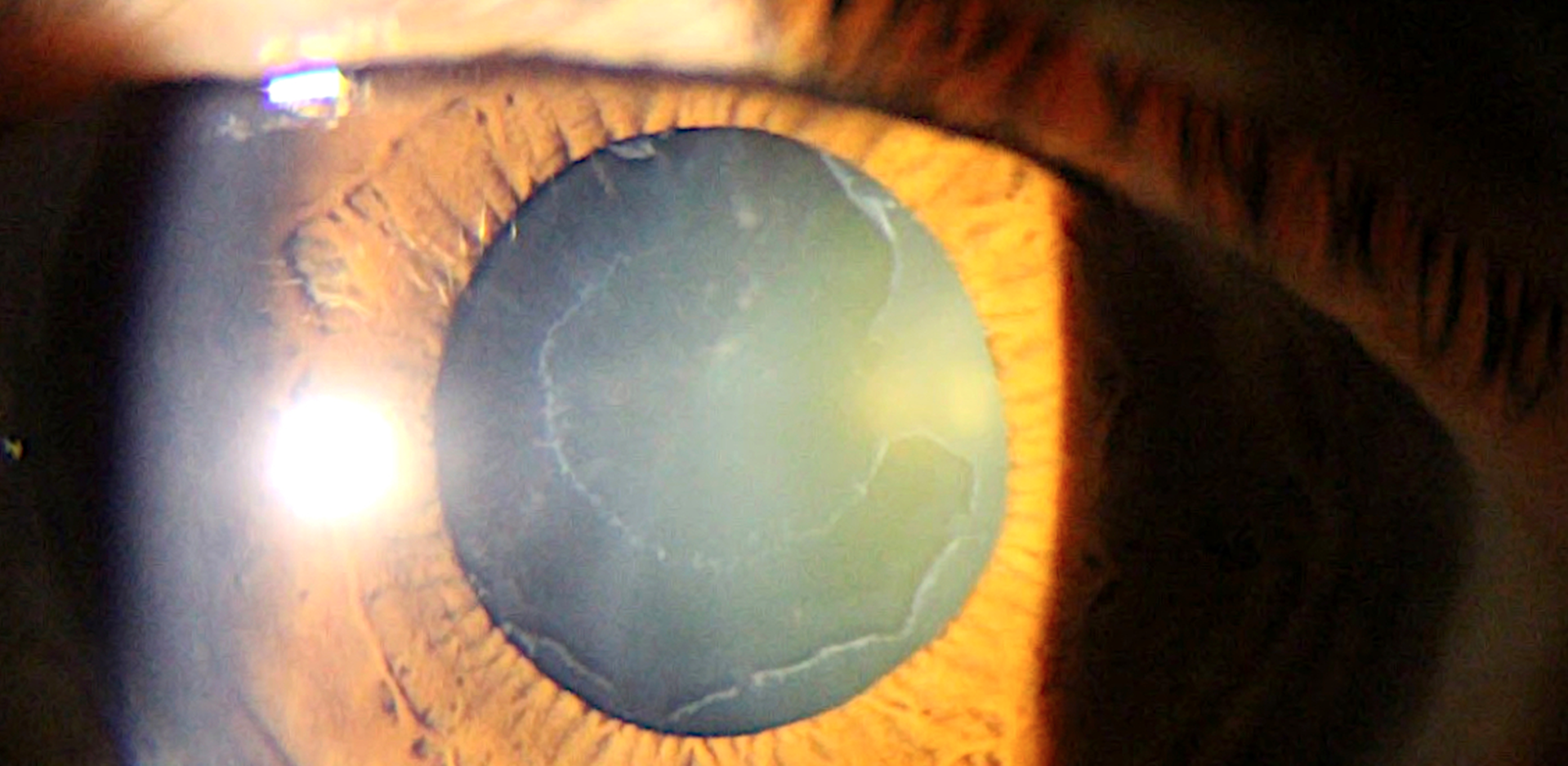Purpose: Evaluation of the incidence of pseudoexfoliation (PEX) syndrome and glaucoma in cataract patients operated at our Clinic, with an analysis of possible complications.
Methodology: Retrospective evaluation of medical records of PEX syndrome patients who have undergone cataract surgery at the Gemini Eye Clinic Ostrava-Hrusov was undertaken. The study period was from November 2016 to April 2021. The evaluated parameters were the incidence of PEX syndrome, age and gender of patients, intraocular pressure (IOP) before the surgery, pre-existing therapy of previously diagnosed secondary glaucoma and the occurrence of perioperative complications.
Results: In the study period of 4.5 years, out of the total number of 14 167 operated eyes with cataracts there were 852 eyes of 689 patients with PEX syndrome diagnosed at our Clinic, i.e. 6.0 %. The mean age was 76.9 years, the median 77 years, range 54–100 years. The observed pathology was more common in women at a ratio of 1.84: 1 (552: 300). Elevation of IOP above 21 mmHg was recorded in 118 eyes, in 14 of them IOP reached values over 30 mmHg. Diagnosed and long-term treated secondary glaucoma was confirmed by 153 patients (204 eyes), out of which 22 eyes have undergone antiglaucoma laser (19 eyes) and / or surgery (5 eyes) in the anamnesis. Perioperatively, we recorded the following pathological findings accompanying the occurrence of PEX syndrome in 231 eyes. Most often it was poor artificial mydriasis (189 eyes), then subluxation of the lens (31 eyes) or zonular fragility (17 eyes). To reduce the risk of perioperative and postoperative complications, implantation of a capsular tension ring was indicated in 20 eyes. Complications during the procedure occurred in 11 eyes, of which 8 eyes were diagnosed with advanced cataract.
Conclusion: PEX syndrome and glaucoma are relatively common diseases that can complicate the lives of patients and eye surgeons. The incidence of PEX syndrome in our cataract patients was 6 %. Proper diagnosis of this disease is important not only for the possible occurrence of numerous complications during and after cataract surgery, but also for the possible presence of secondary glaucoma. It also serves to detect possible involvement of the contralateral eye. In addition, due to the involvement of practically all tissues in the body, the patient is endangered by numerous, especially vascular comorbidities. For these reasons, we find it appropriate that these patients are observed by other healthcare specialists. In our experience, early indication of cataract surgery is important to achieve a lower degree of zonular fragility and a softer lens core. In addition, lower levels of proinflammatory pseudoexfoliation material occur in the anterior segment of the eye in the early stages, which may have a beneficial effect on the postoperative healing

